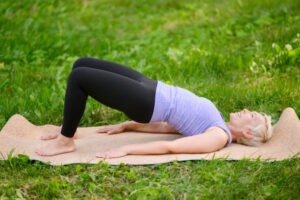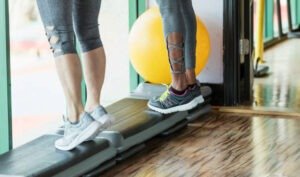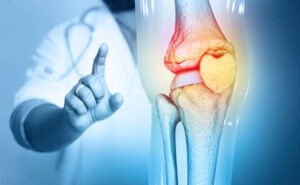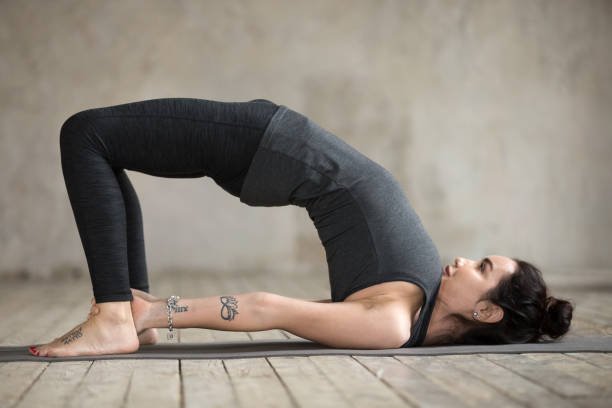In today’s fast-paced world, joint health often takes a backseat—especially for those who exercise regularly or lead sedentary lives. However, protecting and strengthening your joints is essential for mobility, longevity, and overall wellness. The good news? You can build joint strength without high-impact movements. Low-impact exercises offer a safer, smarter way to enhance joint stability, improve flexibility, and prevent injury—all while being gentle on your body.

This comprehensive guide dives into 6 Gentle Exercises designed specifically to support your joints. Alongside detailed breakdowns and step-by-step instructions, you’ll also discover tips, modifications, and evidence-based benefits. Perfect for beginners, seniors, recovering athletes, or anyone seeking a mindful workout.
1. Wall Squats (Isometric Mini‑Squats)

Why it Works
Wall squats engage your quadriceps, hamstrings, and glutes while putting minimal stress on knees and hips. Holding a squat position builds muscular endurance and joint stability without dynamic movement.
How to Do It
- Stand with your back flat against a wall, feet hip-width apart and about 12 inches away from the wall.
- Slowly slide down until your knees form a 90-degree angle (or less, if it’s more comfortable).
- Hold this position for 20–30 seconds, keeping your core engaged and back flat.
- Push through your heels to stand up.
- Repeat 5–10 times, working up to 3 sets.
Benefits
- Builds muscular strength around knee and hip joints.
- Eases pressure on the spine thanks to wall support.
- Ideal for those rehabbing from knee injuries.
Modification
Reduce the squat depth and hold for shorter durations if new to exercise or dealing with knee soreness.
2. Seated Leg Extensions

Why it Works
This exercise isolates the quadriceps and is performed seated—eliminating impact on knee joints while promoting strength and flexibility.
How to Do It
- Sit tall in a sturdy chair with feet flat on the floor.
- Extend your right leg forward until it’s parallel to the ground.
- Hold for 3–5 seconds, then lower it back down.
- Do 10–15 reps per leg, 2–3 sets total.
Benefits
- Strengthens the quadriceps with no direct load on the knees.
- Enhances knee joint alignment.
- Great for beginners and elderly individuals.
Modification
Add ankle weights (1–2 lbs) as you grow stronger.
3. Glute Bridges

Why it Works
Glute bridges strengthen the glutes, hamstrings, and lower back—key muscles for hip and pelvic stability, reducing the risk of lower-body injuries.
How to Do It
- Lie on your back with knees bent, feet hip-width apart, arms relaxed by your sides.
- Lift hips toward the ceiling until your body forms a straight line from shoulders to knees.
- Squeeze your glutes at the top and hold for 2–3 seconds.
- Lower back down slowly.
- Perform 12–15 reps for 2–3 sets.
Benefits
- Supports hip and core stability.
- Reduces lower-back pain by reinforcing posterior chain muscles.
- Low-spine compressive force makes it safe for most individuals.
Modification
Place resistance bands around your thighs for added glute activation.
4. Side‑Lying Clamshells

Why it Works
This exercise targets gluteus medius and minimus—essential muscles for hip stability and alleviating knee, hip, and lower-back issues.
How to Do It
- Lie on one side with hips and knees stacked; knees bent at about 45 degrees.
- Keep feet touching and lift your top knee as high as comfortable, keeping hips steady.
- Pause at the top, then lower slowly.
- Complete 12–15 reps on each side, 2–3 sets.
Benefits
- Stabilizes pelvis and hip joint.
- Prevents overuse injuries like IT Band Syndrome.
- Gentle and effective for all fitness levels.
Modification
Use a loop band just above the knees to increase resistance over time.
5. Heel‑and‑Toe Raises (Calf Strengthening)

Why it Works
Low-impact strengthening for calves and ankles improves lower-limb stability while reducing risk of falls and tendon injuries.
How to Do It
- Stand behind a chair, holding it lightly for balance.
- Slowly rise onto your toes, hold for 2–3 seconds, then lower.
- Then shift weight onto heels, lift toes, hold, and lower.
- Alternate heel and toe raises for 10–15 reps each, with 2–3 sets.
Benefits
- Strengthens calves, shins, and ankle stabilizers.
- Enhances balance and proprioception.
- Safe for most, provided balance is sufficient.
Modification
Perform seated heel raises for extra stability during ankle strengthening.
6. Bird‑Dog (Contralateral Limb Extension)

Why it Works
The bird-dog is a dynamic stability move that strengthens back, glutes, and shoulders while improving core control and spinal support.
How to Do It
- Start on all fours (hands under shoulders, knees under hips).
- Extend right arm forward and left leg backward simultaneously, engaging core to maintain neutrality.
- Pause for 2–3 seconds, return to start.
- Alternate sides, performing 10 reps per side for 2–3 sets.
Benefits
- Promotes spinal alignment and core–back strength.
- Prevents low-back and hip injuries.
- Low-impact but effective for movement coordination.
Modification
Perform with just arm or leg raises until ready for full extension.
Benefits of Low‑Impact Moves for Joint Health

- Reduced Joint Stress
By avoiding jumps or heavy loads, these exercises minimize wear on cartilage and connective tissue. - Improved Stability & Alignment
Strong muscles around joints decrease injury risk. - Enhanced Mobility & Flexibility
Many exercises encourage controlled range-of-motion (ROM) movement. - Accessibility for All Fitness Levels
Suitable for beginners, elderly, and those recovering from injury. - Prevention of Overuse Injuries
Promotes balanced strength and compensates for repetitive tasks like desk work. - Supports Long-Term Health
Consistent low-impact training aids functional independence as you age.
Tips for Safe & Effective Practice
- Warm-Up First: Always spend 5–10 minutes warming up with dynamic stretches or light cardio (e.g., marching in place).
- Focus on Form: Maintain proper alignment; quality > quantity.
- Progress Gradually: Increase resistance, sets, or reps only when form is solid.
- Listen to Your Body: Mild muscle fatigue is okay; sharp pain isn’t.
- Cool-Down & Stretch: Spend 5 minutes stretching major muscle groups after exercise.
- Frequency: Aim for 2–4 sessions per week to support joint health.
- Consistency Matters: Regular practice is key for long-term joint support.
Sample Weekly Routine
| Day | Workout | Duration |
|---|---|---|
| Monday | Glute Bridges, Wall Squats | 20 min |
| Tuesday | Bird‑Dog, Seated Leg Extensions | 25 min |
| Wednesday | Rest/Light Walk | 30 min |
| Thursday | Side‑Lying Clamshells, Heel & Toe Raises | 20 min |
| Friday | Full Circuit (2 sets of each) | 30 min |
| Saturday | Yoga/Stretch & Recovery | 25 min |
| Sunday | Rest or Gentle Movement | — |
Why You Should Try This Program
- Zero Equipment Required: Perfect for home workouts.
- Time-Efficient: Each session can be done in just 20–30 minutes.
- Comprehensive Joint Support: Targets knees, hips, ankles, spine, and shoulders.
- Low Injury Risk: Slow, controlled, joint-friendly exercises.
- Scalable to All Ages: Ideal for elders, beginners, and rehab patients.
Additional Insights & Research
- Isometric Exercises (like wall squats) are known to improve quadriceps strength and reduce joint pain—particularly in mild osteoarthritis.
- Glute and hip stabilization drills (e.g., clamshells) help prevent common injuries such as runner’s knee.
- Core stabilization moves (e.g., bird-dog) reduce lower back pain by improving lumbar spine support.
Final Thoughts
Joint health is a cornerstone of long-term mobility and quality of life. Incorporating these six low-impact exercises into your routine can help you:
- Build joint support without strain
- Improve balance, alignment, and mobility
- Prevent future injuries
- Enjoy sustainable, injury-free fitness
These 6 gentle exercises are proof that you can build strength, improve flexibility, and prevent injuries without putting unnecessary strain on your body. Whether you’re recovering from an injury, managing joint pain, or just looking for safer ways to stay active, these low-impact moves offer a sustainable path to better health.
Stay connected with us for more such lifestyle related topics! Read the latest national and international news on Khabari Bandhu – Business, Education, Entertainment, Religion, Cricket, Horoscope and much more.
How to Dress for Your Body Type With Confidence: Look Good, Feel Great!
How to Sleep Better Without Taking Pills: 10 Proven Tips That Actually Work
7 Solo Travel Tips That Will Change the Way You See the World!

